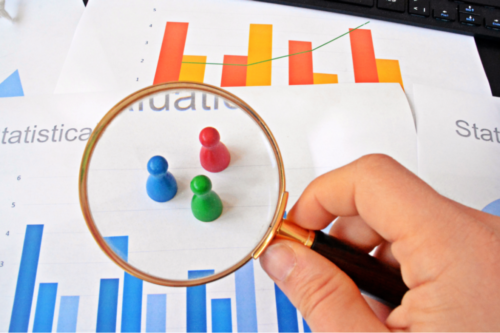- The observational method, as its name suggests, is associated with observation. This is nothing more than the active acquisition of information about a phenomenon. To observe is to carefully perceive an object, an action in which the researcher knows what they want to analyze and why (Díaz, 2011).
Observation is constituted as a process whose main function is to collect information. The collection implies a coding activity. This means that the selected raw information is translated by means of a code to be transmitted (Fabbri, 1998). Observation isn’t simply a perceptual process that makes sensations conscious, it’s also an organizing process.
As a scientific method, observation is characterized by:
- Serving a research objective.
- Being systematically planned.
- Being controlled and related to more general propositions.
- Subject to validity and reliability checks.
The observational method
The observational method is a scientific procedure in which the occurrence of perceptible behaviors is revealed. These behaviors are organized and analyzed (both qualitative and quantitative), through the use of instruments and parameters that make it possible to detect the relationships between them. (Anguera, 2003).
This method contrasts hypotheses, replicates results obtained, and contributes to the theoretical development of the disciplinary field to which it’s circumscribed. Furthermore, it helps the researcher to keep track of the variables throughout a research process (Anguera and Hernández, 2014).
In this method, there’s no manipulation of behaviors as in experimental or quasi-experimental research designs. However, there’s control over possible extraneous variables that may affect or distort the data. With this control, it’s intended that the independent variables are the only ones responsible for the effects on the dependent variables.
Phases of the observational method
Next, we’ll review the eight phases of the observational method as proposed by Anguera (2003).
1) Exploratory phase
In this phase, the aim is to specify the object of study, reduce, or eliminate the reactivity of the observed subject, increase the level of training of the observer, and collect information. During this phase, detailed knowledge and familiarization with the observation situation should be acquired.
2) Prior disposition
In this stage of the observational method, the following aspects must be taken into account. They’re aimed at facilitating the procedure and avoiding errors:
- Maintenance of inter-sessional constancy. To guarantee maximum equality between the different observation sessions.
- Maintenance of intra-sessional constancy. It must be ensured that the session isn’t interrupted by an unexpected event that causes a break in activity.
- Treatment of temporary disruptions. To guarantee the solution of situations that interrupt the observation process.
- Timing. Preparation of a plan or agenda related to the succession of activities to be carried out throughout the observation process.
- Identification of the observation session. To include information related to the physical environment, the activity to be carried out (staging a narrative, prosocial episodes, learning of new behaviors, etc.), the social level of the subjects observed, information of an institutional or institutional nature, and organizational (duration of activities in their usual context).
3) Observational sampling plan
In this phase, it’s necessary to plan when the observations will be made to obtain the corresponding record. The optimal situation would be that of a continuous record, equivalent to the totality of the reality that’s intended to be studied.
Some elements to take into account are the observation period, the frequency of the sessions, the minimum number of sessions, and the criteria for starting and ending the sessions.
4) Preparation of the instrument
This phase consists of the creation of an instrument to record the information collected. Two examples are the category system and the field format. The category system is of higher rank, while the field formats are more flexible and suitable in complex empirical situations.
5) Registration and encryption
This stage of the observational method involves collecting data from reality and translating it into a specific medium. The transcription of the data must be conducted through a descriptive record. It’ll be broken down into behavior units to give rise to a semi-systematized record. Later, the record will be progressively systematized.
6) Get parameters
The following parameters are recorded in this phase:
- Frequency. The number of actions or occurrences of the behavior observed.
- Order. The sequence of the different behaviors.
- Duration. The time of appearance of the behavior.
- Latency. The time that elapses between the presentation of a stimulus and the appearance of the behavior.
7) Data quality control
Once the data has been collected, the quality of the data must be guaranteed. The most basic of the control requirements is the reliability of the observational record. Validity must also be ensured. In other words, what was intended to be measured has been measured.
8) Data analysis
The last phase of the observational method is the analysis of the data. From this, the results will be obtained. These findings should be logically related to the objectives set at the beginning of the investigation and to the literature on similar issues.

Advantages and limitations of the observational method
Finally, we’ll review some advantages and limitations of the observational method.
Advantages
- It’s possible to obtain the information as it happens.
- It allows the learning and studying of many forms of behavior.
- It helps study subjects who can’t provide verbal reports. For example, infants, animals, etc.
- It can be used in cases where there’s resistance to the investigation by the subjects.
Limitations
- Possibility of foreign and hidden factors interfering.
- The practical possibility of applying the observation techniques is limited by the duration of the events.
- Not all observed data can be quantified, although it usually can be.
To conclude, the observational method isn’t based on an ordinary and simple observation. In fact, it’s a complex and scientific observation that seeks to provide objective, valid, and reliable knowledge. Through its rigorous and systematic application, a researcher can grasp the reality that they want to study and collect relevant information to achieve the objectives of his research.
The post The Observational Method appeared first on Exploring your mind.



















Comments